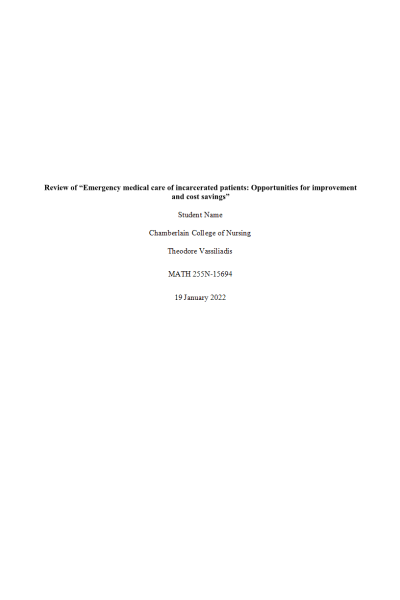MATH 225N Week 3 Lab Assignment; Review of Emergency medical care of incarcerated patients Opportunities for improvement andcost savings
-
$20.00
| Institution | MATH 225N Statistical Reasoning for the Health Sciences |
| Contributor | Egreta Stone |
Review of “Emergency medical care of incarcerated patients: Opportunities for improvement and cost savings”
- The graph I chose in figure 2b is a quantitative graph because it is collecting the percentage of incarcerated patients coming in for different issues due to medical/psych reasons or due to trauma. According to Holmes, Illowsky and Dean (2018), “quantitative data are numbers derived from counting/assessing a population. This is the preferred type of data as it is thought to be more mathematical” (Holmes, Illowsky and Dean, 2018).
- This graph is a bar graph. A bar graph is an “appropriate to compare the relative size of the categories... It also could not be used if the percentages added to less than 100% (Openstax., n.d.). Graph 2b is a Pareto chart which means the bars are sorted from largest to smallest so that it is easier to view and make sense of.
- The class size is the difference between the true upper limit and the true lower limit. The class size for medical/psych patients is 34.2. The class size for trauma patients is
11.3. This bar graph is skewed to the right since they used a Pareto chart, organizing the bars from largest to smallest................ Continue
| Instituition / Term | |
| Term | Year 2022 |
| Institution | MATH 225N Statistical Reasoning for the Health Sciences |
| Contributor | Egreta Stone |










































































